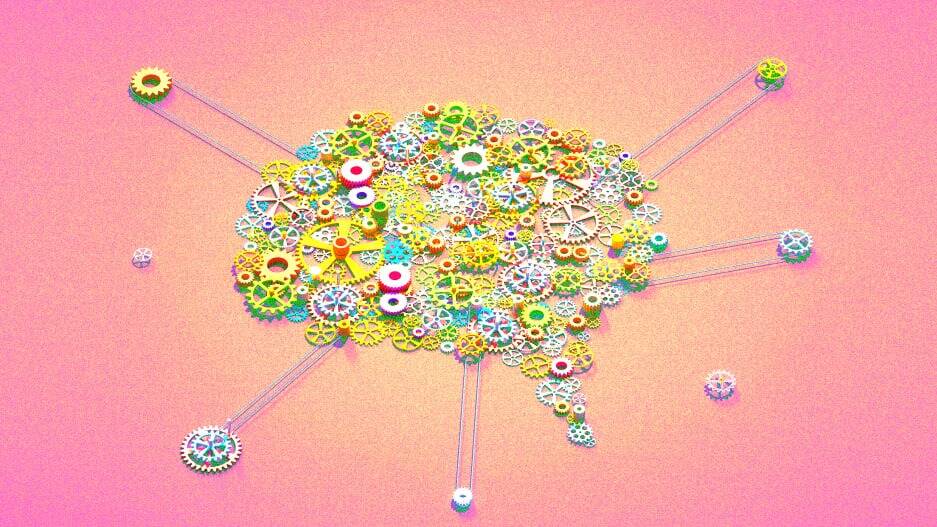- | 9:00 am
Why neurodiversification is more important than hiring workers based on cultural fit
In her new book, cognitive scientist and neurodiversity expert Maureen Dunne explains the advantages of neurodiversity.

It turns out that one of the most powerful strategies for embracing authentic neurodiversity inclusion, in practice, is to target “neurodiversification.”
In finance, portfolio managers focus on the concept of diversification. The big point of diversification in portfolio management is to ensure that not all assets are correlated with each other because correlation leads to the risk of catastrophic losses when market conditions deteriorate.
In other words, if a group of investments are all correlated, there’s a huge downside risk. This is because when a portfolio of investment positions is highly correlated, they are likely to all respond to some new change in economic or financial conditions in the same way. For example, high-yield bonds, commodities, and speculative technology stocks have all historically performed poorly when interest rates are rising rapidly. Hence, a portfolio made of only oil producers, gold futures contracts, junk bonds, and early-stage small-cap growth companies could return strong profits over any given period. But it contains the seeds of its own destruction if the wrong market conditions arise.
We can think about neurodiversity in similar terms. Groupthink is a serious risk for all organizations. Failing to spot and address the emergence of a groupthink dynamic can be devastating. An active program of proactively embracing neurodiversity inclusion can act as a tremendous hedge against this risk.
An organization that takes this seriously and implements neurodiversity inclusion as a strategy to protect against homogeneity of perspective can be thought of as “neurodiversifying” its human resources portfolio.
The significant point to make here is that such a strategy, in my experience, will exhibit a positive feedback dynamic: By proactively targeting diversity of thought across an entire organization, authentic neurodiversity inclusion will become second nature. Such an organization will have an easy time attracting and retaining new neurodivergent talent because decision-making teams at all levels will be accustomed to neurodiversity to an extent sufficient to defuse conscious or unconscious unproductive biases that typically act as a barrier to inclusion.
In other words, neurodiversification deployed as a hedge against groupthink is an extremely effective strategy to foster authentic neurodiversity inclusion as a sustainable organizational habit of the heart.
But there’s a catch.
As much as targeting neurodiversification can be understood as a value-add strategy for embracing authentic neurodiversity inclusion across the board, one key hurdle must be overcome in its successful implementation: bucking the standard of culture fit in hiring, firing, and organizational advancement decisions.
One can make a strong argument that the primary obstacle preventing mature organizations from finding new break-out success is the deeply ingrained practice of prioritizing culture fit in hiring and promoting team members.
Companies have traditionally valued cultural compatibility when assessing new hires or advancement potential, often dedicating a portion of the interview process specifically to this aspect. There is often even at least one interview within the interview series dedicated to this goal alone. However, allowing a focus on culture fit to guide recruitment and assessment of new and existing talent may stifle upside potential for the organization as a whole over time. It turns out that the best path may be to simply flip this conventional wisdom and target culture expansion instead.
According to research from Stanford University’s Baron and Hannan in 2002, culture fit may actually help early-stage start-ups that already have a disruptive idea and just need to scale. But that recipe quickly turns sour. As the company matures past this early stage, the premium shifts from homogeneity to heterogeneity.
In his 2017 Stanford eCorner presentation, “Hire for Culture Fit or ADD?,” Wharton management scholar Adam Grant notes that, as companies grow, they start to encounter disruption from the outside and have to adapt to a context defined by constant change driven by external factors. “After they go public, the ones that hire on culture fit grow at the slowest rates. . . . Culture fit is code for hiring a bunch of people who ‘think the same way I do.’ And it leads to groupthink and weeds out diversity of thought.”
The solution? Hiring for culture add instead of culture fit. This implies a proactive search for team members who bring new ideas, backgrounds, and cognitive tendencies.
But it isn’t easy to kick the culture fit habit. It’s slippery and has many faces. In my book, The Neurodiversity Edge, I cover a range of prevalent cognitive biases that obstruct attempts to embrace diversity of all kinds, and culture fit wears most of them in one form or another among its disguises.
Note: I am not suggesting an organization should actively recruit a new addition with a history of dishonesty and flawed character artifacts to challenge a culture of honesty and integrity. Another caveat is that culture fit is an important factor to the extent it is limited to sharing an appreciation for the organization’s fundamental values. In other words, if you are an organization built on the value of caring for the natural environment, I am not suggesting you go out and hire someone who actively disdains nature and environmental care. Or, if you are a venture capital firm, I am not suggesting you go out and hire an ardent socialist who disdains private enterprise.
However, within those boundaries and within reason and common sense, bringing on new talent with very different backgrounds, assumptions, and cognitive tendencies is quite possibly the only way an established company can break through to a new level of success.
Stop and read that last sentence again. Give it some thought.
In many cases, the same kinds of inputs are going to lead to the same output. You have been driving through the same neighborhood for many years. The only way out may be to take a left turn where you have been taking right turns for all that time. People like to find common ground with other people. People also dislike tension and conflict, even if it’s productive. This is especially true in the workplace. The people in charge of hiring new team members are just people, too. If they tend to gravitate toward what they know—toward the familiar, the homogenous, the comfortable—then they are holding you back.
To approach this same point from a different angle, consider what drives Darwinian evolution. Evolution works by variation and selection. Often, a major evolutionary change that provides enormous survival or reproductive value comes from variations that wouldn’t have made immediate intuitive sense at that stage when analyzed in retrospect.
For example, there are frogs in Alaska that evolved the ability to produce and store lots of extra glucose. While this makes sense from an energy standpoint, it turned out to lay a foundation for intracellular cryoprotection of cell volume. The upshot is that these same frogs can now freeze during the winter. Their hearts stop. They turn to ice. And then they thaw out in the spring and go on living.
That’s a breakthrough adaptation that opens powerful new optionality and potential success. And that power is derived from the variation—from exploring the matrix of all possible designs. The “selection” part of the process is just the weed-out. The value enters the equation in the “variation” part of the process. The more variation, the more potential for breakthrough value. I firmly believe the same logic applies to diversity of thought and lived experience. The main customary force preventing this is the traditional habit of prioritizing culture fit when making key human resources decisions.
Ditching culture fit for culture expansion is an active choice to embrace enough added variation to drive the next evolutionary leap of progress in an organization that may otherwise be at risk of stagnating. Naturally, this discussion is ultimately aligned with authentic neurodiversity inclusion, which is the epitome of embracing culture expansion in team building.
Adapted with permission from the publisher, Wiley, from The Neurodiversity Edge: The Essential Guide to Embracing Autism, ADHD, Dyslexia, and Other Neurological Differences for Any Organization by Maureen Dunne. Copyright © 2024 by John Wiley & Sons, Inc. All rights reserved. This book is available wherever books and eBooks are sold.






































